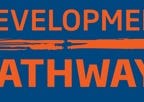Progress and disparities among children in South Africa
Development Pathways is proud to share a new report titled “Global goals for every child: Progress and disparities among children in South Africa”. The report is one of the first to use the framework of the Sustainable Development Goals (SDGs) adopted by the United Nations to chart progress and to highlight critical challenges that directly affect the lives of children. It was published by the South African Human Rights Commission (SAHRC) and United Nations Children’s Fund (UNICEF) and authored by Bjorn Gelders from Development Pathways.
South Africa has made significant progress during the last two decades in areas such as child poverty, child survival, mother-to-be transmission of HIV and primary school attendance, among others. However, the report finds stark gaps in opportunity between rich and poor households, urban and rural communities, black African and White children; as well as disadvantages based on gender, disability and other markers.
Selected findings include the following:
- South Africa has halved the share of children living below the extreme poverty line since 2003, largely thanks to the expansion of the country’s social security system.
- Chronic undernutrition, or stunted growth, affects over 1 in 5 young children and 28% of the poorest children.
- 30% of pregnant women are living with HIV, but the country is making important strides in addressing the HIV and AIDS epidemic.
- Almost 1 in 5 of the poorest children live in households that still rely on rivers, streams and other unimproved sources for their drinking water.
- Access to primary education is near universal, but many children face serious learning difficulties.
- Violence against children is widespread and 1 in 3 adolescents have experienced some form of sexual abuse in their lifetime.
- Compared with their non-disabled peer, children with disabilities are less than half as likely to complete secondary schooling while young people aged 15–24 with disabilities are twice as likely to be unemployed and not engaged in learning.
Download here
Bjorn Gelders is a Senior Social Policy Specialist and Economist at Development Pathways, specializing in poverty, inequality, vulnerability and social protection programming. His areas of expertise include mixed-methods research design, statistical analysis, microsimulation and policy analysis.
Follow Bjorn on Twitter: @TheBjornGelders
Originally published at Development Pathways.
